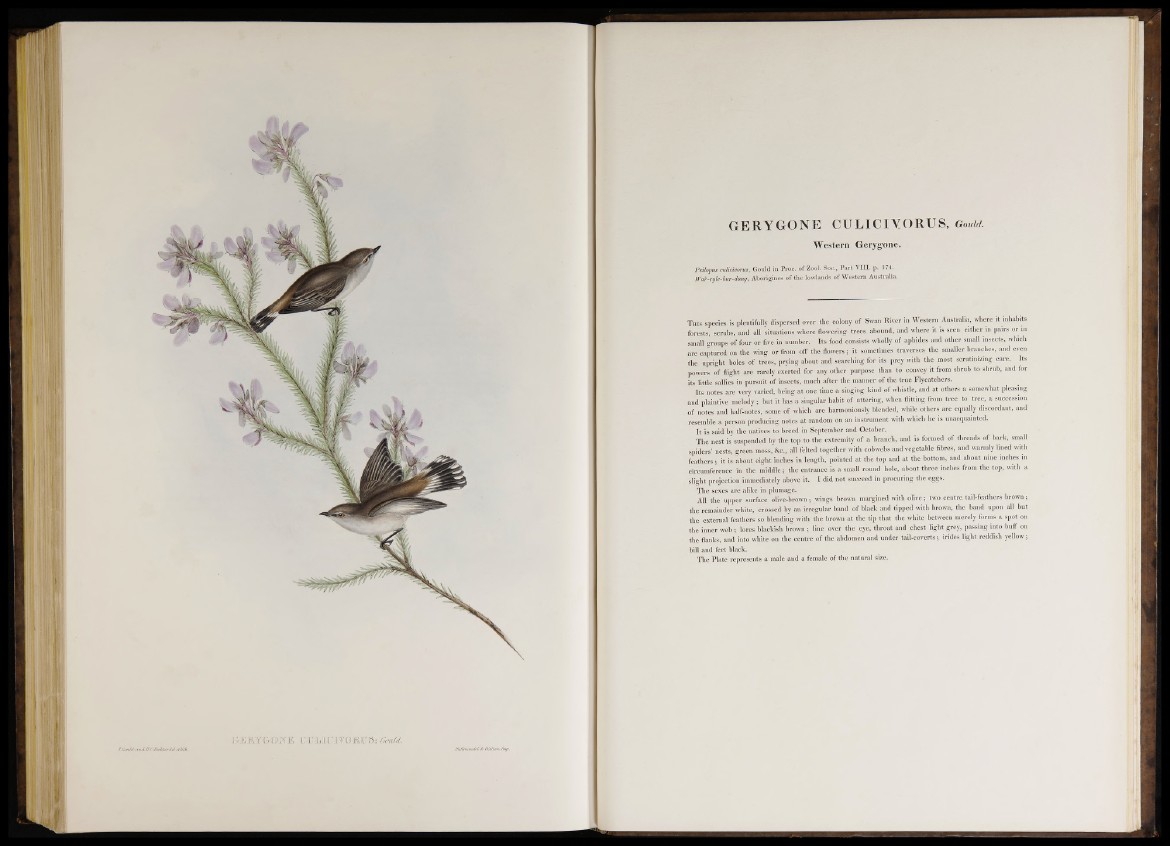
GERYGONE CULICIYORUS, Gould.
Western Geryg’one.
Psilopus culicivorus, Gould in Proc. of Zool. Soc., Part VIII. p. 174.
fVar-ryle-bur-dang, Aborigines of the lowlands of Western Australia.
This species is plentifully dispersed over the colony of Swan Kiver in Western Australia, where it inhabits
forests, scrubs, and all situations where flowering trees abound, and where it is seen either in pairs or in
small groups of four or five in number. Its food consists wholly of aphides and other small insects, which
are captured on the wing or from off the flowers; it sometimes traverses the smaUer branches, and even
the upright boles of trees, prying about and searching for its prey with the most scrutinizing care. Its
powers o f flight are rarely exerted for any other purpose than to convey it from shrub to shrub, and for
its little sallies in pursuit o f insects, much after the manner of the true Flycatchers.
Its notes are very varied, being at one time a singing kind of whistle, and at others a somewhat pleasing
and plaintive melody; but it has a singular habit o f nttering, when flitting from tree to tree, a succession
o f notes and half-notes, some of which are harmoniously blended, while others are equally discordant, and
resemble a person producing notes at random on an instrument with which he is unacquainted.
It is said by the natives to breed in September and October.
The nest is suspended by the top to the extremity o f a branch, and is formed o f threads of bark, small
spiders' nests, green moss, &c., all felted together with cobwebs and vegetable fibres, and warmly lined with
feathers; it is about eight inches in length, pointed at the top and at the bottom, and about nine inches in
circumference in the middle; the entrance is a small round hole, about three inches from the top, with a
slight projection immediately above it. I did not succeed in procuring the eggs.
The sexes are alike in plumage.
All the upper surface olive-brown; wings brown margined with olive; two centre tail-feathers brown;
the remainder white, crossed by an irregular band of black and tipped with brown, the band upon all hut
the external feathers so blending with the brown at the tip that the white between merely forms a spot on
the inner web ; lores blackish brown ; line over the eye, throat and chest light grey, passing into buff on
the flanks, and into white on the centre o f the abdomen and under tail-eoverts; irides light reddish yellow;
bill and feet black.
The Plate represents a male and a female of the natural size.